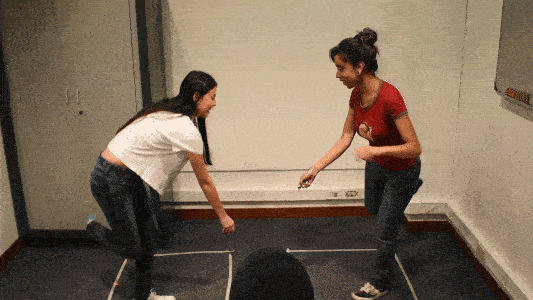9th AHFE International Conference 2018
Laser Duel
Multiplayer Game with Wearable Interface

team
i2t Research Center Carlos Arce, Scholar Researcher Jaime Giraldo, Visual Designer

wearable + game
Wearable technologies and ubiquitous games are a new kind of computer science that, instead of isolating human beings in artificial digital worlds, provide a means of continuous and integrated expression with our social and physical environment.
Although they do not have enough diffusion now someday they will become such an important part of our life as laptops, mobile phones, or even the written word, a completely new medium that becomes meritorious for exploration and development.
Laser Duel is not only a game with an innovative interface, it is also a proposal to integrate the physical and digital world more and more.

how to win game design
multiplayer game
The player will reduce the life of his opponent for each shot of the laser they receive in their socks. Later, whoever remains with lives will win after no one else has.


how it works
Each player is equipped with a pair of socks, in wich different electronic components are installed. These compoenntes are responsible for processing the inputs and translate them into physical, visual and sound stimuli for the player.

lylipad + sock wearable
All the magic happens thanks to the Lilypad Arduino processinf the inputs and outputs from electronic modules athat are just stitched with conductive thread.
The wearable interface consisted of a light sensor and three different types of actuators: a RGB led, a buzzer and a vibe motor. All components were connected to a Lilypad Arduino using a conductive thread.
In the Github Repository, you can clone the project and find all the information you need to build the Laser Duel by yourself.
Go github.com/attearturo/laser-duel


first experiments prototyping

In order to improve the performance and experience of the game, we designed and conducted evaluations of the interface performance focusing on two main components: the multimodal feedback system, and the involvement in game design over several rounds.
The NASA-TLX was used as a tool to assess the perceived workload for each player on each round. Also, players’ accuracy and response time were recorded. To evaluate user engagement, the game sessions were recorded on video and analyzed manually to extract the different game strategies but also human gestures associated with frustration or enjoyment.

You can read the full report here.

multi-sensorial feedback
the wearable interface with a multimodal feedback that reinforces the meaningful aspects of the interaction was successful in conveying simple and concrete feedback that support the interaction without introducing confusion or frustration with the interface.
social engagement
The results showed that the socially mediated rules rounds were classified with greater likelihood in the top class than the fixed rules condition. The expressions of enjoyment, such as laughter and jokes increased by 20% as well as interactions between players, such as speech and physical contact.

conclusions
We introduced a unique wearable interface with potencial not only for social gaming, but for other applications like health care – for example: strengthening and pain relief in body stretch.
This kind of development demonstrates how meaningful multimodal feedback and self-directed involve ment in design. We will be able to tackle not only visual of human factors challenges but work with all human senses.

This project was made thanks to the i2t Center and published in the AFHE 2018 Internacional Conference. Check it out here.
Want to stay in touch arturocotacio@gmail.com
